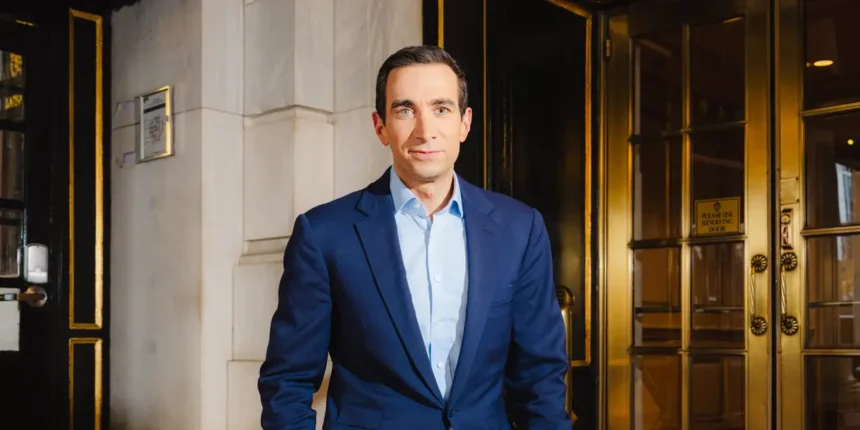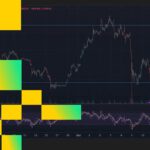Walking up to the east side entrance of The Plaza Hotel, Andrew Ross Sorkin is clearly in his element. As he arrives, he reflects on the storied history of the hotel, particularly its significance a century ago. “In 1929, people would come here and it was insane — every business guy would be here and they would all sort of gawk at each other,” he explains enthusiastically. Sorkin draws parallels between the Plaza of the past and the famed Four Seasons in the ’80s and ’90s, emphasizing how both venues served as epicenters for influential figures.
The Plaza Hotel features prominently in Sorkin’s new book, “1929,” which narrates the infamous stock market crash that ultimately led to the Great Depression. The narrative includes Charlie Mitchell, then-chairman of what is now Citibank, who frequented the hotel. A memorable scene unfolds in June 1929, where Mitchell dines at the Plaza alongside General Motors founder William Durant, drawing the admiration of other patrons. Today, Sorkin experiences a similar awe from passersby who recognize him as a CNBC host and celebrate his book launch.
Historically, The Plaza was not just a social gathering spot for New York City’s elite; it also served as a frontline stage for the stock-market speculation rampant at the time. The hotel’s Oak Room bar had been transformed into an EF Hutton brokerage during this period. Sorkin notes the broader context of Prohibition and the national obsession with stock market investments, pointing out that the streets around the hotel were lined with brokerage firms, akin to the ubiquitous presence of Starbucks today.
Fast forward to the present, The Plaza welcomes patrons with flowing drinks once again, but the historical excesses of the 1920s have largely been curtailed by regulations. “It’s no longer legal to pay actors to bid up the price of a stock on the floor of the New York Stock Exchange,” he observes, acknowledging modern safeguards like the Securities and Exchange Commission. Nonetheless, Sorkin expresses concern that some troubling traits of the past are resurfacing, particularly in the context of AI-driven investment fervor.
“The truth is, it’s human nature to always want more,” he states, linking this tendency to the market dynamics we see today. The speculative excitement around artificial intelligence has surged stock valuations to dizzying heights, resembling the speculative bubbles of history. Current metrics, such as the Shiller CAPE ratio and the Warren Buffett indicator, are at unprecedented levels, signaling potential overvaluation.
While Sorkin insists that the timing of his book’s release is coincidental, he acknowledges a shared sentiment among investors. “When I started this project, I thought I was writing a book about history,” he explains. However, the deeper he delved, the more he realized the parallels between the events leading up to 1929 and today’s market conditions. Although he refrains from definitively predicting another crash, he does voice concerns that we’re currently experiencing some form of a bubble.
Drawing upon lessons from his previous work on the 2008 financial crisis, Sorkin outlines significant similarities between the past and the present. He notes the sweeping technological advancements in the 1920s, exemplified by RCA, whose stock price soared before eventually collapsing. Today’s enthusiasm for AI technology mirrors this past exuberance, prompting questions about the sustainability and returns of current investments.
Sorkin also points out the growing accessibility of high-risk market segments for average investors. The decision to allow investments in alternative assets like crypto and private equity within retirement accounts echoes the democratization of finance that took place during the 1920s speculation craze. Furthermore, he highlights concerns that regulatory measures designed to protect investors are being weakened, which could erode transparency and accountability.
Despite the potential risks, Sorkin acknowledges that financial bubbles can stimulate economic growth and innovation, providing opportunities for wealth generation. However, he cautions that human greed will inevitably lead to market excesses and corrections.
In “1929,” he includes a poignant epigraph from Albert Einstein, dated just days before the catastrophic market crash: “The ordinary human being does not live long enough to draw any substantial benefit from his own experience.” This reflection underscores the cyclical nature of financial markets and the lessons they impart, often learned anew by each generation.







